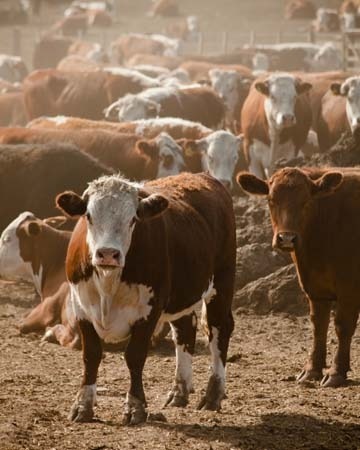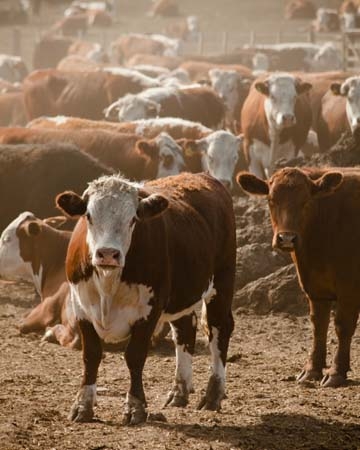What's The Deal With Grass-Fed Beef?
Today, reading and understanding labels on nearly anything can be a difficult task, especially when there's limited transparency, as is often the case with beef and poultry. Trying to decipher the difference between "Natural," "Natural and No Antibiotics Added," "Certified Organic," and "Grass-Fed" can become complicated, especially when price points, taste, and marbling come into play. And the pretty pictures of cows grazing in the meadows don't really help either.
To learn more about grass-fed beef, we turned to Paul Alward, the President and CEO of Hudson Valley Harvest, which is a relatively new company that sells meat and produce from the Hudson Valley in New York. He defines grass-fed to mean cattle that have been raised on pasture and are fed only on hay and forage and never receive any grain. (Check out our definition cheat sheet below for information on the other types of beef.)
Dedicated to local products and thoughtful farming practices, the company, which is composed of a collection of 30-plus family farms in the Hudson Valley, has some farms that finish their cattle with grain for the last 30 days before harvest. (The company values transparency and is vigilant about making sure everything is clear and easy to understand on the labels of their products.)
Why finish cattle on corn? Because the high-carbohydrate diet helps increase marbling (the streaks or pieces of fat in meat), which makes the beef juicy, tender, and flavorful. This is usually why people from other parts of the world prefer American-raised beef to their own and is also why some of the farms in Paul's company finish their pasture-rasied cattle on grain — customer expectation.
As he explains it, consumers are used to the taste of conventional meat, which has a high level of marbling (grass-fed beef is much leaner than conventional and thus has less marbling).
 He says that the texture and mouthfeel are completely different, with beef raised on an all-grain diet being mushy in comparison and totally different in taste to grass-fed beef. The whole process really creates unique types of beef and consumers expect a certain taste when they buy beef.
He says that the texture and mouthfeel are completely different, with beef raised on an all-grain diet being mushy in comparison and totally different in taste to grass-fed beef. The whole process really creates unique types of beef and consumers expect a certain taste when they buy beef.
However, finishing pasture-raised cattle on grain provides a segue way for consumers who aren't used to the taste of grass-fed beef because this process will help facilitate some marbling and it will be an easier transition for consumers than just making that big jump to grass-fed.
Paul firmly believes that grass-fed beef has a "depth of flavor that's superior to other types," but it's not something that people are used to.
Grass-fed beef follows more traditional methods of allowing cattle to graze freely and feed on a more natural diet of food that's good for their digestive system. This creates leaner meat with less fat because they are moving around more and are a healthier product for you to consume. Conventionally raised cattle, on the other hand, that are fed on corn often become very sick because their digestive system cannot cope well with corn (hence the need for antibiotics).
The choice you make at the grocery store is completely up to you, but perhaps the next time you are deciding what to get, try grass-fed beef or even 30-day grain-finished beef to see if you can taste the difference. And who knows, maybe you'll even like it.
Definition Cheat Sheet
Cattle are typically raised in feedlots on a corn-and-grain diet. These cattle are generally given vaccines, antibiotics when they're sick, and oftentimes growth hormones to quicken their time until harvest.
Natural Beef: Refers to cattle that received vaccines at birth and branch out into one of two categories: One that has never received antibiotics or growth hormones and will be labeled as "certified no antibiotics or no added hormones." The second is a withdrawal program that means the cattle has not received antibiotics or growth hormones within 100 days of harvest.
Organic Beef: Comes from cattle that have been raised on grain and/or grass that is 100% organic and have been raised according to the regulations set by the USDA. These cattle also have never been given antibiotics, hormones, or vaccinations.
Grass-Fed, Grain-Fed, & Grain-Finished: Cattle that leave pasture to be finished on grain like corn are referred to as grain-fed or grain-finished, which usually occurs in a feedlot. Those that remain on pasture until harvest are called grass-fed. However, as we learned from Paul, being a grass-fed farmer is extremely expensive and requires that the farmer commit themselves entirely to this type of farming.
(Photo courtesy of Istock/2StockMedia)

